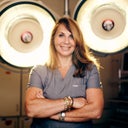Posted underBreast Fat Transfer q&a
What percentage of your patients experience lumps after breast fat transfer?
E.g. oil cysts, fat necrosis, etc. Are you more conservative in your transfers, or do you prefer to add more?
Answers (8)
From board-certified doctors and trusted medical professionals
Dr. Mats Hagstrom, MD (license on probation)
Board Certified Plastic Surgeon
Answer
More Breast Fat Transfer Questions
See all Breast Fat Transfer Q&AWE SEND PRETTY
EMAILS
What’s trending? Who’s turning heads? Which TikTok myths need busting? We’ve got you. No fluff, no gatekeeping—just real talk. Get our free, unfiltered newsletter.




